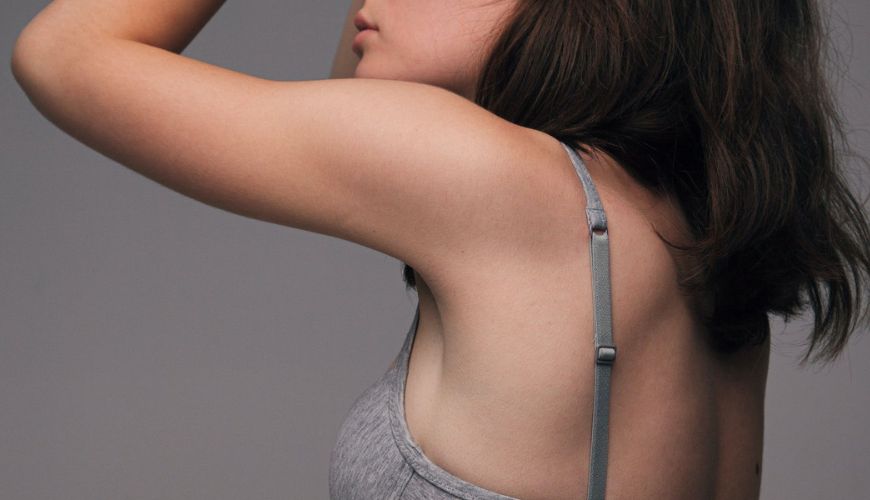Ask A Derm: How Do I Treat My Keratosis Pilaris?
Thespotlyte | July 28, 23

Even the most skincare-savvy individuals would love to get insider intel from a dermatologist. But sometimes, it’s hard to ask a doctor your most burning questions — maybe you believe your concern is too trivial, or you’re embarrassed to get the answer in a face-to-face appointment. That’s why Spotlyte brings you Ask a Derm, a regular column where we have professionals provide the answers to your questions, no matter how big or how small. In this installment of Ask a Derm, Dr. Audrey Kunin breaks down everything about keratosis pilaris, a.k.a. “chicken skin,” and why you shouldn’t let it stop you from wearing sleeveless tops.
Nearly all skincare products can be boiled down to one, seemingly simple goal: giving you smooth, soft skin. But if you have keratosis pilaris, that mission is a harder for you to achieve than most. This hereditary skin condition, otherwise known as KP, is caused by excessive skin cells forming around body hair follicles. The result is frustratingly rough, dry bumps, typically on the upper arms, thighs, and butt. Not only will slathering yourself with a standard body lotion not help, but it certainly won’t do anything to fade the discoloration caused by inflammation of those hair follicles.
If you’ve ever felt ashamed or embarrassed by this “chicken skin,” know that you are far from being the only KP sufferer out there. According to Dr. Audrey Kunin, “all ages, races and both genders can have KP,” and over half of the world’s population is affected by it, though women are slightly more predisposed to the condition. You’re also more likely to get KP if you have a family history of it, or if you have eczema, hay fever, asthma, or ichthyosis vulgaris. But —good news!—KP is not contagious!
Dr. Kunin shared that while about 60 percent of children are prone to developing KP (which tends to manifest on cheeks), some will only have hormonal KP flareups only as teens. The disorder could resolve itself for teen sufferers by the mid-twenties, but Dr. Kunin states that 40 percent of adults will continue to struggle with it.
That’s the truly unfortunate characteristic of KP — there is no cure. But you absolutely reduce the appearance of it. For starters, limit your skin exposure in cold, dry climates, which will irritate your skin. You should also add some acid-based formulas to your body care regimen.
“Alpha-hydroxy acids, such as glycolic and lactic acid, help chemically exfoliate crusty bumps, helping smooth out skin texture,” explains Dr. Kunin. And, as mentioned earlier, standard body lotions aren’t going to do much for the intense dryness of KP. Dr. Kunin advises looking for formulas that contain urea, an “ideal humectant to powerfully hydrate dry, rough skin,” plus ingredients to help reduce irritation, such as tea extracts, to soothe redness.
DermaDoctor® KP Duty® Lotion ($38) features all three — glycolic acid, urea, and green tea extract — to help smooth, nourish, and soothe. We also like SLMD Glycolic Acid Body Lotion ($38), which boasts glycolic acid and shea butter, and Skinceuticals® Body Retexturing Treatment ($60), formulated with urea and a lactic acid derivative to exfoliate and nourish.
Though the above formulas should soothe your KP flare-ups, you can also visit your dermatologist for in-office treatments if you’re not seeing enough relief. Dr. Kunin suggests chemical peels and microdermabrasion for thorough exfoliation, which will help smooth your skin’s texture, and IPL (intense pulsed light) to help treat excessive redness. If your hair follicles affected by KP are also developing blemishes, Dr. Kunin says blue light therapy can help.
Finally, you can talk to your doctor about hydroquinone — a brightening agent — to help improve darker skin discoloration, or short-term topical steroids to relieve irritation and inflammation. However, these should be used under the guidance of a professional, as they are very powerful (and must be prescribed).
With all your treatment options, you should see KP as less of a skincare challenge and more of a small hiccup. “Keratosis pilaris is very manageable,” says Dr. Kunin, quipping, “there is now every reason to put ‘sleeveless’ back into your style.” Just remember to slick some sunscreen on your extra-exfoliated skin!






